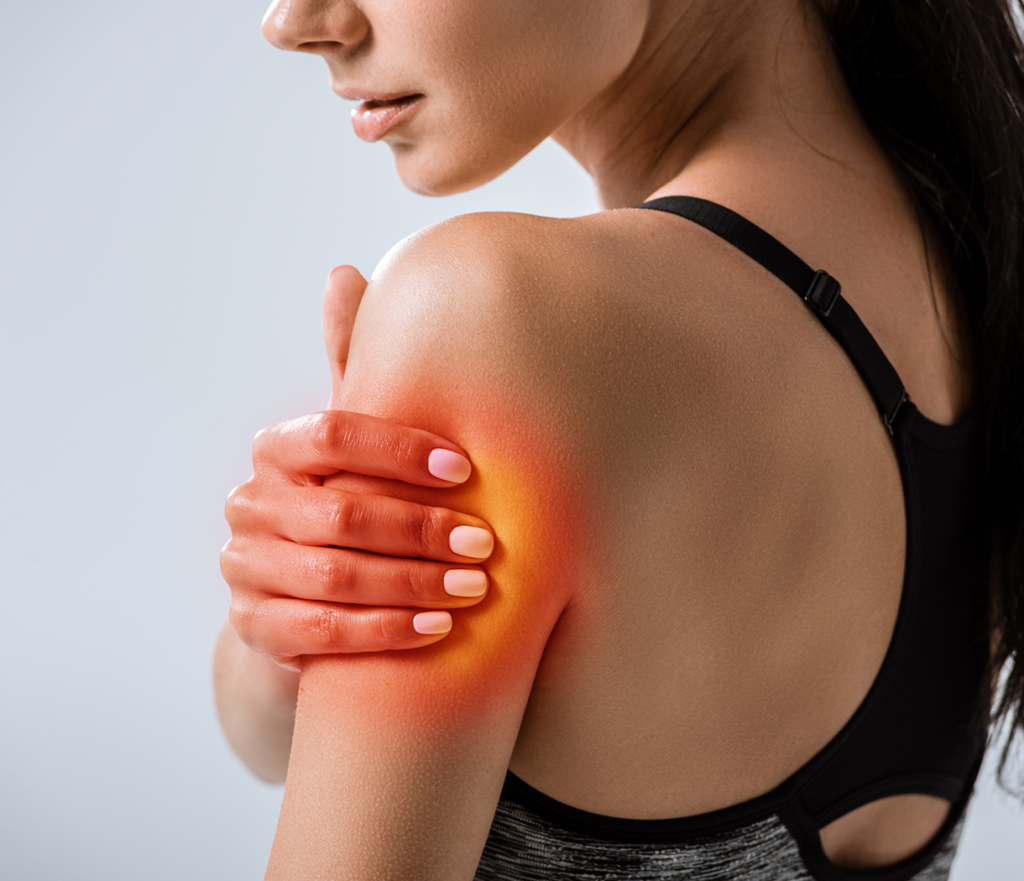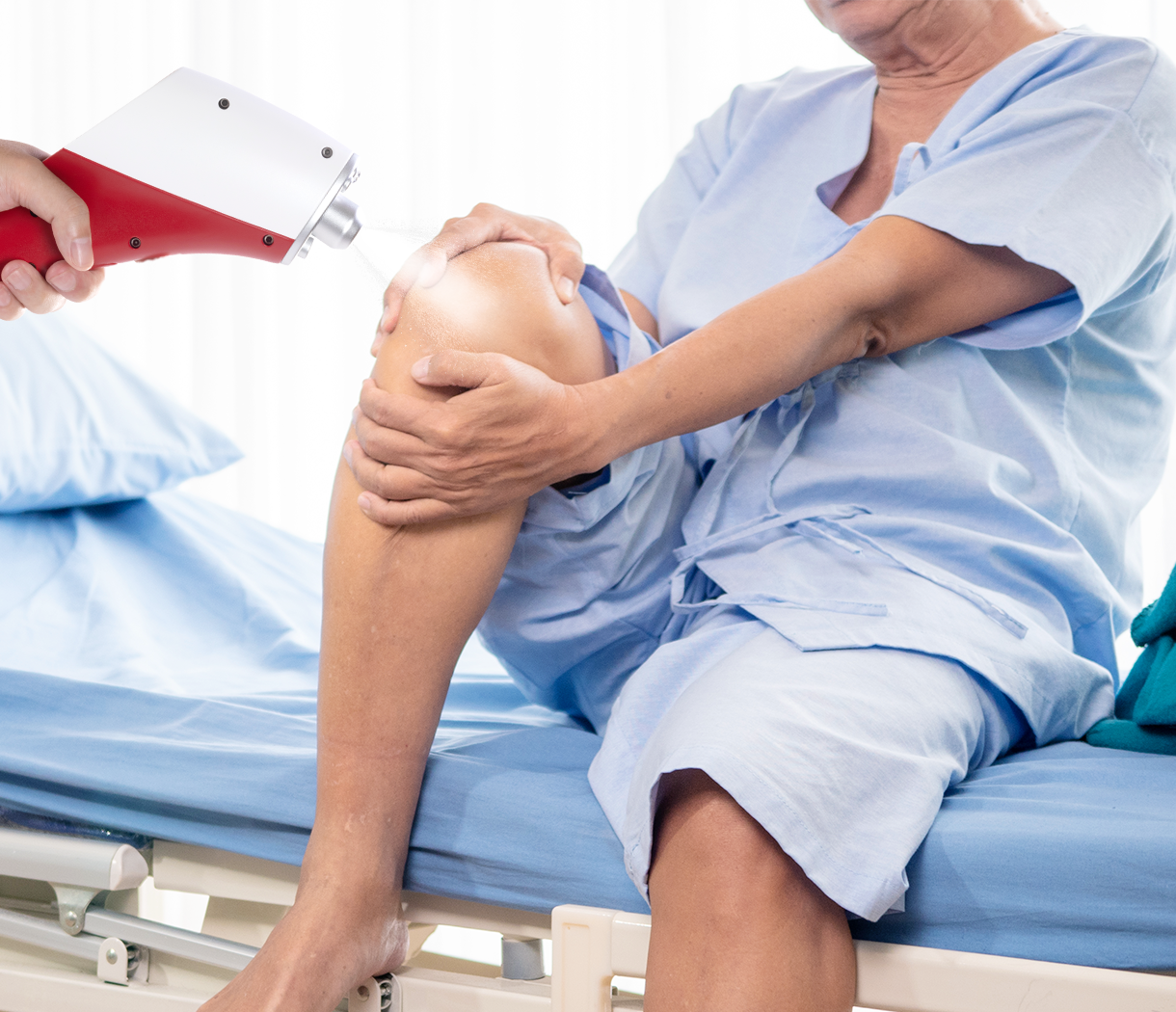Introduction to CO₂ Cryotherapy
What Is CO₂ Cryotherapy?
CO₂ cryotherapy is a localized cold therapy that utilizes carbon dioxide gas to rapidly cool targeted areas of the body. By exposing muscles and tissues to extremely low temperatures, this method aims to reduce inflammation, alleviate pain, and promote faster recovery. Unlike whole-body cryotherapy, CO₂ cryotherapy focuses on specific regions, making it ideal for treating localized muscle tension and injuries.
Difference Between CO₂ and Nitrogen Cryotherapy
While both CO₂ and nitrogen cryotherapy involve exposing the body to cold temperatures, they differ in several aspects. CO₂ cryotherapy typically reaches temperatures around -78.5°C, whereas nitrogen cryotherapy can go as low as -196°C. CO₂ systems often use a handheld device to direct the gas to specific areas, providing targeted treatment. In contrast, nitrogen cryotherapy usually involves entering a chamber that cools the entire body. CO₂ cryotherapy is generally considered safer and more cost-effective, with fewer risks associated with extreme cold exposure.
Why CO₂ Cryotherapy Is Gaining Popularity
The rise in popularity of CO₂ cryotherapy can be attributed to its effectiveness in providing quick relief from muscle soreness and its convenience. Athletes, fitness enthusiasts, and individuals with physically demanding jobs are turning to this therapy for its ability to accelerate recovery and enhance performance. Additionally, the non-invasive nature and minimal side effects make it an attractive option for those seeking alternative treatments for muscle tension.
Understanding Muscle Tension

Common Causes of Muscle Tension
Muscle tension isn’t just a post-workout nuisance—it can stem from many lifestyle and physiological triggers. Understanding the underlying causes helps guide more effective and personalized recovery strategies.
Post-Workout Microtrauma
After intense exercise, your muscles undergo controlled damage at the microscopic level, known as microtrauma. This is a natural part of muscle building and strength adaptation. However, when the body doesn’t have enough time to recover, tightness sets in. Muscles feel sore, stiff, and less responsive due to localized inflammation and swelling. Without adequate recovery tools, such as cryotherapy, this cycle can lead to persistent tension and even overuse injuries.
Stress-Induced Muscular Tightness
Mental stress has a direct physical impact. When you’re stressed, your body goes into a fight-or-flight state—activating cortisol and muscle guarding mechanisms. Areas like the neck, shoulders, and lower back tighten as a protective response. Unlike post-workout soreness, this tightness can last for days or even weeks, reducing sleep quality and overall well-being. Chronic stress is now recognized as a major contributor to musculoskeletal pain in otherwise healthy individuals.
Poor Posture or Ergonomics
In today’s digital age, hours spent at desks, staring at phones, or driving lead to unnatural postures. Muscles are meant to contract and release, not hold static positions all day. Poor ergonomics—like slouched backs or forward-leaning necks—create imbalances, overactivating some muscles while underusing others. Over time, this leads to shortened, tight muscles and weakened opposing groups, especially in the upper back, hips, and hamstrings.
Symptoms of Muscle Tension
Recognizing the symptoms of muscle tension early can prevent minor discomfort from escalating into chronic pain. While experiences vary, most people report a mix of the following:
- Persistent tightness or stiffness, especially in commonly overused muscle groups (neck, shoulders, hamstrings).
- Dull aches or a “heavy” sensation, sometimes described as a pulling or cramping feeling.
- Muscle knots or trigger points, which are small, sensitive areas of hardened muscle fiber.
- Reduced flexibility or range of motion, making it harder to stretch or move freely.
- Discomfort during rest or sleep, especially when lying on the affected muscle.
If left untreated, tight muscles may contribute to movement compensation, which can overload other parts of the body and lead to injury.
How CO₂ Cryotherapy Works for Muscle Tension
Mechanism of Action: The Science Behind the Chill
CO₂ cryotherapy works by rapidly cooling the skin and underlying tissues, leading to vasoconstriction followed by vasodilation. This process helps reduce inflammation, alleviate pain, and promote healing in the targeted muscle areas. The cold exposure also slows nerve conduction velocity, which can decrease the sensation of pain.
Vasoconstriction and Blood Flow Rebound
The initial vasoconstriction caused by CO₂ cryotherapy reduces blood flow to the treated area, minimizing inflammation and swelling. Subsequently, vasodilation occurs, increasing blood flow and delivering oxygen and nutrients essential for muscle repair and recovery. This rebound effect enhances the healing process and reduces muscle tension.
CO₂ Gas Penetration vs. Surface Cooling
Unlike traditional ice packs that primarily cool the skin’s surface, CO₂ gas can penetrate deeper into muscle tissues, providing more effective relief from muscle tension. The rapid cooling achieved with CO₂ gas leads to a more significant and longer-lasting therapeutic effect compared to surface cooling methods.
Localized Treatment for Deep Muscle Relief
CO₂ cryotherapy allows for precise targeting of specific muscle groups, making it ideal for treating localized muscle tension. By focusing on the affected area, this therapy can provide deep muscle relief without impacting surrounding tissues, resulting in more efficient and effective treatment outcomes.
Neurochemical Responses: Endorphin Release & Pain Modulation
Exposure to cold temperatures during CO₂ cryotherapy stimulates the release of endorphins, the body’s natural painkillers. These neurochemicals help modulate pain perception and promote a sense of well-being. Additionally, the cold exposure can reduce the excitability of nerve endings, further contributing to pain relief and muscle relaxation.
Benefits of CO₂ Cryotherapy for Muscle Health
Rapid Relief from Pain and Soreness
CO₂ cryotherapy offers swift alleviation of muscle pain and soreness by rapidly lowering skin and underlying tissue temperatures. This sudden cooling effect slows nerve signal transmission, effectively reducing pain perception. Additionally, the cold exposure diminishes inflammation, leading to decreased discomfort and quicker recovery times.
Improved Flexibility and Range of Motion
Regular CO₂ cryotherapy sessions can enhance muscle flexibility and joint range of motion. By reducing muscle stiffness and promoting blood flow during the rewarming phase, tissues become more pliable, facilitating better movement and reducing the risk of injuries.
Reduced Inflammation Without Medication
CO₂ cryotherapy serves as a non-pharmacological approach to managing inflammation. The cold exposure constricts blood vessels, limiting the flow of inflammatory mediators to affected areas. As the body rewarms, vasodilation occurs, flushing out toxins and promoting healing without the need for anti-inflammatory drugs.
Enhanced Recovery Time Post-Exercise
Athletes and fitness enthusiasts utilize CO₂ cryotherapy to expedite post-exercise recovery. The therapy reduces muscle microtrauma and soreness, allowing for shorter rest periods between training sessions. This accelerated recovery supports consistent performance and training intensity.
Non-Invasive and Drug-Free
As a non-invasive treatment, CO₂ cryotherapy eliminates the risks associated with surgical interventions and the side effects of medications. Its drug-free nature makes it suitable for individuals seeking natural recovery methods or those with sensitivities to certain medications.
Patient-Centric Benefits for Muscle Tension
Fast Relief from Stress-Induced Muscle Tightness
Stress often leads to muscle tension, particularly in the neck, shoulders, and back. CO₂ cryotherapy provides rapid relief by relaxing muscle fibers and reducing the physiological effects of stress. Patients frequently report a sense of relaxation and decreased muscle tightness following treatment.
Functional Recovery in Daily Movements
Beyond athletic performance, CO₂ cryotherapy aids in restoring functional movement for daily activities. Individuals experiencing muscle tightness from sedentary lifestyles or repetitive tasks benefit from improved mobility and reduced discomfort, enhancing overall quality of life.
Practical Considerations for CO₂ Cryotherapy
Who Should Consider CO₂ Cryotherapy?
CO₂ cryotherapy isn’t just for elite athletes. It’s ideal for anyone experiencing muscle tightness, including:
- Fitness Enthusiasts & Athletes: For post-workout recovery, reduced muscle soreness, and faster performance rebound.
- Office Workers: Experiencing neck and back stiffness from prolonged sitting or poor posture.
- People with Chronic Muscle Tension: Whether from stress, overuse, or underlying musculoskeletal conditions.
- Post-Surgical or Physical Therapy Patients: As a non-invasive option to support rehabilitation and reduce inflammation.
How Often Should You Use It?
Treatment frequency depends on your goals and the severity of muscle tension. Here’s a general guideline:
- Acute muscle tension or soreness: 2–3 sessions per week until symptoms subside.
- Chronic tension or recovery support: 1–2 sessions weekly for maintenance.
- Post-workout recovery: Within 30 minutes after training for best anti-inflammatory effect.
CO₂ cryotherapy sessions are brief—typically lasting 10-15 seconds—making them convenient even for tight schedules. Overuse doesn’t equal better results. Muscles need time to respond and regenerate between sessions.
Potential Side Effects and Contraindications
Although CO₂ cryotherapy is generally safe, especially compared to whole-body systems or pharmaceuticals, there are a few caveats to keep in mind:
Minor Side Effects (usually temporary):
- Skin redness or tingling
- Numbness in treated area
- Mild discomfort due to rapid cooling
Contraindications – Avoid if you have:
- Cold hypersensitivity or Raynaud’s phenomenon
- Open wounds or skin infections
- Poor circulation or vascular disorders
- Uncontrolled cardiovascular conditions
- Peripheral neuropathy
Always consult with a healthcare provider or physiotherapist before starting cryotherapy, especially if you have underlying medical issues.
Real-Life Applications and Research Highlights
Supporting Scientific Research
Scientific studies show that CO₂ cryotherapy effectively aids muscle recovery, reduces inflammation, and enhances post-exercise healing. Research indicates that it improves blood circulation, reduces muscle soreness, and helps modulate inflammation. It’s a promising alternative to traditional pain management methods, offering benefits not only for athletes but also for people with chronic muscle pain or stress-induced tightness.
Patient Testimonials and Case Snapshots
Athletes and everyday individuals alike have shared positive experiences with CO₂ cryotherapy. A marathon runner found that it reduced muscle soreness and improved flexibility after intense exercise. Similarly, an office worker with neck and shoulder tension reported immediate relief and improved mobility after treatment. These success stories highlight the therapy’s versatility for both performance recovery and everyday muscle tension.
References
Cryotherapy with carbon dioxide hydrate enhances immediate recovery of muscle function from neuromuscular fatigue:
https://www.tandfonline.com/doi/full/10.1080/02640414.2024.2423135
Cryotherapy Anti-Inflammatory Evidence-Based Benefits:
https://www.verywellhealth.com/cryotherapy-benefits-8683261?



